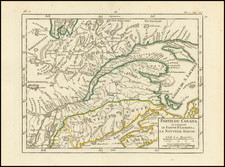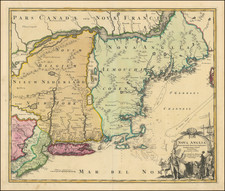The Only Known Copy of the First State!
Rare (previously unlocated) first state of this important early view of Boston, engraved by John Carwitham, after a painting by the American Artist, William Burgis.
Taken from the vantage point of Castle Island and portraying the town from South Battery to the North End, the view was engraved circa 1736. The dominant features are Long Wharf, Fort Hill to its left (i.e., south) and in the background the three peaks of the Trimontane, of which only Beacon Hill remains today. Also notable are the many church spires, their height exaggerated probably for artistic purposes.
Carwitham's view is copied from the first state of the monumental 3-sheet view of Boston by William Burgis, A South East View of the Great Town of Boston in New England in America, drawn in 1722, which was engraved by John Harris and printed in 1723 and is generally considered to be the earliest printed view of Boston. The first state of the Burgis view of Boston is apparently known in only two examples, one of which is in the Crown Collection of the British Museum, with that example having been pasted onto the original sheets printed with corrections up to 1736, approximately the same year as Carwitham's view of Boston was engraved. Carwitham's view of Boston pre-dates these revisions to the Burgis view made by William Price in 1736, which added 3 new places names, taking the total number of places on the key to 53. It should however be noted that Carwitham's view includes a "3a" and "3b" entry, bringing the total to 51 entries. As noted by Deak:
The view shows Boston from the bay, showing the waterfront with the Long Wharf in the foreground, was apparently based on the first state of the 1723 Burgis view. When John Carwitham prepared the engraving, he added the Old South Meeting House and Hollis Street Meeting house, both built in 1731. The spire of Christ Church seen in the Burgis view -- then an architectural projection rather than a reality -- was retained by Carwitham even though the spire would not be built until about 1740.
Carwitham's view is apparently one of the "lost engravings" associated with an unpublished history of North America by William Byrd II. A number of the plates which were apparently intended for this work are a part of the Richard Rawlinson Collection of copper plates, which was given to the Bodleian Library in Oxford after Rawlinson's death in 1755. Other plates were acquired, revised and issued by Carrington Bowles, including the present view of Boston. As no example of the Boston view pre-dating the Carrington Bowles imprint survives, the first state of Carwitham's view of Boston has to date been unknown, although Deak surmised that the pre-Carrington Bowles state of the view existed, based upon the existence of a single example of the pre-Carrington Bowles state of the Manhattan view by Carwitham, currently in the collection of the Library of Congress.
The view has been identified in 4 states, although as noted above, until now, the existence of the first state was speculative and based upon Stokes' observations regarding a similar Manhattan view engraved by Carwitham, in the collection of the Library of Congress. The states are as follows:
- First State: Pre-dates the inclusion of the Carrington Bowles imprint but with the 50 key numbers on the view.
- Second State: Carrington Bowles Imprint and 50 key numbers on the view and the number IV at the top right corner.
- Third State: Carrington Bowles Imprint. Number 34 at the bottom left corner. Title re-engraved. Key numbers removed.
- Fourth State: Bowles & Carver. Title re-engraved and now reads ... City of Boston ...
As noted above, the available bibliographic information suggests that no example of the First State of the Carwitham view survives, making this example a unique and important discovery.









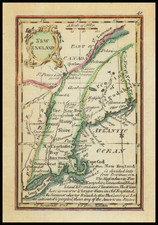
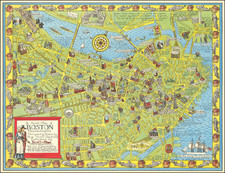
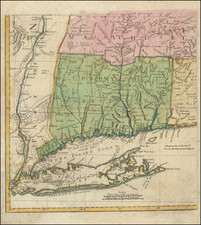
![[British Colonies in America] Carte Qui Contient Une Description Des Iles & Terres Que Les Anglois . . .[maps of Chesapeake, Carolinas, New England, Bermuda, Gulf Coast, Jamaica, Barbadoes & Canada]](https://storage.googleapis.com/raremaps/img/small/61480.jpg)
